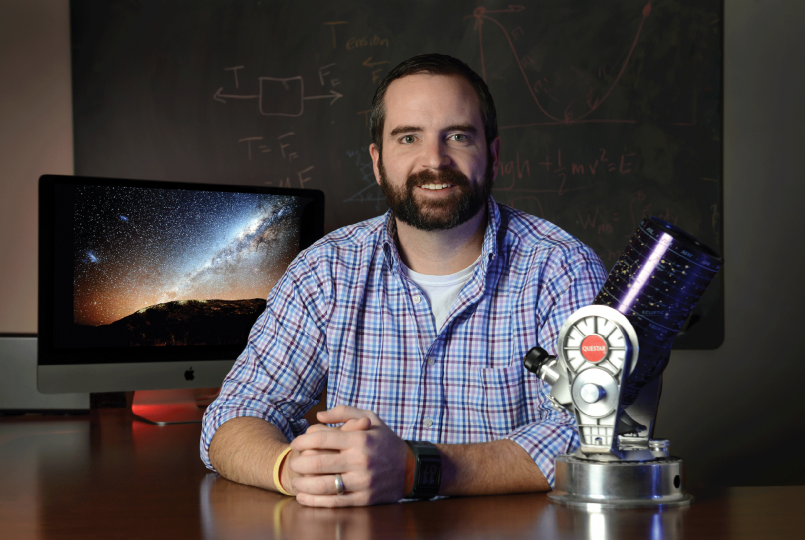by Adam Grybowski
Peering into the farthest reaches of the Milky Way, assistant professor of physics John Bochanski has seen objects in space that have astronomers questioning their conception of our home galaxy.
In July, Bochanski announced that a team he led found the most distant stars ever observed in the Milky Way. Before the discovery, only seven stars had been identified beyond 400,000 light years away. The stars Bochanski helped locate are much farther away, existing at respective distances of 775,000 and 900,000 light years in the sparsely populated outer halo of the galaxy. In fact, they are so far from the sun that they lie about a third of the distance to the Andromeda Galaxy, the nearest spiral galaxy to the Milky Way.
“The discovery lends a unique perspective to humans on Earth and our place in the universe,” says Bochanski, who joined Rider in the fall of 2014. The practical application is that finding these stars could spur a rethinking of the model that predicts how the Milky Way was formed and evolved. The model scientists currently use does not predict a large quantity of stars at the distances of those recently uncovered.
The project that yielded these findings took about two years and only three trips to the MMT Observatory on Mt. Hopkins in Arizona. “We were certainly lucky,” Bochanski says, especially because scientists at smaller schools often have to jockey for time to work with such powerful telescopes.
Bochanski, who lives in Bucks County with his wife, Aileen, grew up in Washington Township in South Jersey, outside of Philadelphia. One of his earliest memories of watching the night sky involves his grandfather pointing out constellations. Soon enough, he got hooked on the subject, especially black holes, which led him to the public library to check out shelves of astronomy books. He scraped together enough money from a paper route to buy a telescope and can recall announcing as a 13-year-old to friends and family his intention to become an astrophysicist.
He traveled that trajectory like a rocket. Bochanski received his bachelor’s at Villanova University and then completed his doctorate in astronomy at the University of Washington. An East Coast guy at heart, he moved back across the country for post-doc work that included a total of six years at MIT, Penn State and Haverford College.
This fall, along with his normal teaching duties, which included launching rockets outside of Science Hall with his Physics 200 class, he led a “choose your own star” event in September that was connected with the University’s Shared Read program, which encouraged students, faculty and staff to read The Glass Castle by Jeannette Walls. He also presented a well-received lecture on campus about conducting astronomy in the era of large digital surveys, a technique that is driving research, collaboration and innovation.
Having discovered the farthest stars in the galaxy, Bochanski knew he had a story that the public could easily understand and the media could translate into a flashy headline. Sure enough, it sparked an immediate reaction, thrusting him into the spotlight on a stage filled with several recent high-profile astronomical events.
Bochanski has been an active part of the conversation about what scientists are exploring in space, and why. “It’s something I feel comfortable doing,” he says, tracing that comfort to his desire to share professional news with his large extended family. “I feel pretty strongly about explaining the importance of these discoveries to folks without technical backgrounds. If my work inspires others or gets them thinking about how big space is or how we got here, that’s a very rewarding aspect of the job.”

